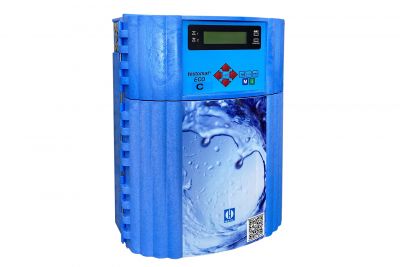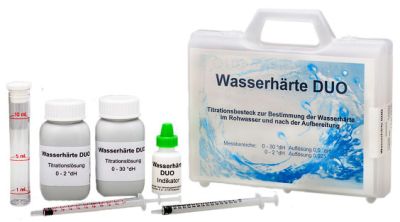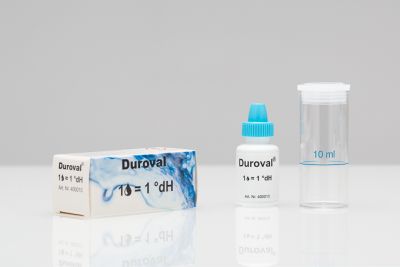Water hardness measurement as a quality parameter
Water hardness measurement as a quality parameter for energy and maintenance management
Water hardness (°dh) test equipment is required for a wide variety of applications as well as areas of use within water treatment. The monitoring of water hardness plays an important role in the course of water treatment.
The different regional water hardnesses or the composition of the water have a direct influence on its use and at the same time, for example, on the taste of the water. In the industrial environment, this fact has a direct impact on the respective processes, their technical design and thus on the quality of the process water produced.
Water hardness is mainly influenced by the so-called primary hardness components “calcium and magnesium cations”. In small traces, barium and strontium also have an influence on water hardness. These lead to deposits (calcification) on fittings, pipelines or technical components (boilers, membranes, etc.) in both private and industrial environments. The proportion of calcium hydrogen carbonate in the water is predominantly responsible for this.
When heated, the easily soluble calcium hydrogen carbonate is converted into the sparingly soluble calcium carbonate and is deposited. This results in the formation of sparingly soluble compounds which, among other things, can lead to damage to the materials. An example of this is the corrosion of the inner walls of boilers. In simple terms, these compounds are deposited over the smallest corrosion spots that already exist. Corrosion continues under this layer in the absence of oxygen.
Furthermore, the carbon dioxide (CO2) dissolved in the water can cause the respective carbonates to form the so-called lime soaps with the participation of dissolved fatty acids or surfactants.
Typical examples can also be found in the private environment. If the hardness in the water is high, for example, troublesome lime deposits form in the kettle or on the heating rods in washing machines or dishwashers. The “lime” deposits like an insulating layer on the heating elements. As a result, more energy must be used to heat the water.
For this reason, the water hardness test is absolutely necessary to ensure proper operation of e.g. boiler systems. Against the background of qualitative requirements in the production of e.g. food and beverages such as cultivated mushrooms or beer, the water hardness has a decisive influence on the growth or taste.
The water hardness test principle is based on a color change method (e.g. automatically Testomat® EVO-TH, Testomat® Lab-TH, as well as manually via Duroval test kits). In this method (complexometric titration), an indicator liquid is added to the water sample until the farm change occurs (red to green).
Applications of these methods for water hardness testing are found in many processes, such as monitoring of drinking water or steam boiler feed water monitoring.
Thus, water hardness as a quality parameter is a crucial factor for energy and maintenance management (cost awareness) and at the same time of high importance for a wide variety of processes.
_400x400.jpg?ts=1732005081)


 Grenzwert-Besteck_400x400.jpg?ts=1734013778)


